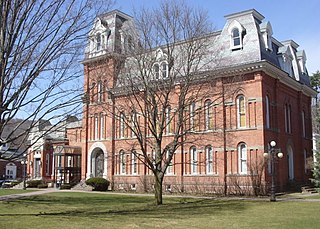
Delhi is a town in Delaware County, New York, United States. The population was 4,795 at the 2020 census. The town is in the east-central part of the county and contains the village of Delhi. The State University of New York at Delhi is located in the town.

Washington Crossing State Park is a 3,575-acre (14 km2) New Jersey state park that is part of Washington's Crossing, a U.S. National Historic Landmark area. It is located in the Washington Crossing and Titusville sections of Hopewell Township in Mercer County, north of Trenton along the Delaware River. The park is operated and maintained by the New Jersey Division of Parks and Forestry. It is supported by the Washington Crossing Park Association, a friends group that works to preserve, enhance, and advocate for the park.

The Crozer Theological Seminary was a Baptist seminary located in Upland, Pennsylvania, and founded in 1868. It was named after the wealthy industrialist, John Price Crozer.

Theodore Roosevelt Inaugural National Historic Site preserves the Ansley Wilcox House, at 641 Delaware Avenue in Buffalo, New York. Here, after the assassination of William McKinley, Theodore Roosevelt took the oath of office as President of the United States on September 14, 1901. A New York historical marker outside the house indicates that it was the site of Theodore Roosevelt's Inauguration.
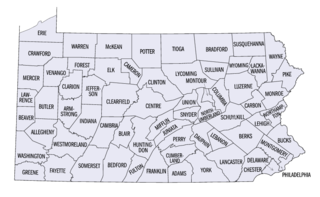
This is a list of properties and districts listed on the National Register of Historic Places in Pennsylvania. As of 2015, there are over 3,000 listed sites in Pennsylvania. All 67 counties in Pennsylvania have listings on the National Register.
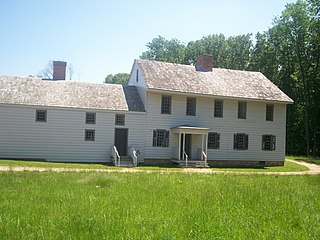
Rockingham is a historic house that was the home of John Berrien (1711–1772). It served as George Washington's final headquarters of the Revolutionary War. It is located at 84 Laurel Avenue, Franklin Township in Somerset County, New Jersey. It was listed on the National Register of Historic Places in 1970.
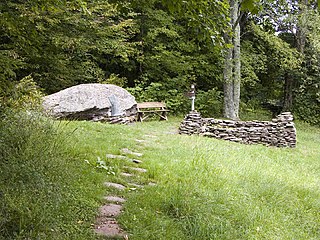
Woodchuck Lodge is a historic house on Burroughs Memorial Road in a remote part of the western Catskills in Roxbury, New York. Built in the mid-19th century, it was the last home of naturalist and writer John Burroughs (1837–1921) from 1908, and is the place of his burial. The property is now managed by the state of New York as the John Burroughs Memorial State Historic Site, and the house is open for tours on weekends between May and October. The property is a National Historic Landmark, designated in 1962 for its association with Burroughs, one of the most important nature writers of the late 19th and early 20th centuries.
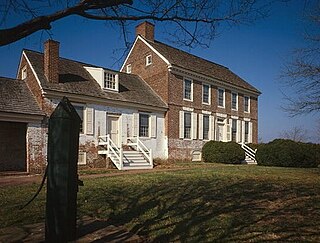
The John Dickinson House, generally known as Poplar Hall, is a National Historic Landmark on the John Dickinson Plantation in Kent County, Delaware, 5 miles (8.0 km) south of Dover. It was the boyhood home and sometime residence of Founding Father John Dickinson (1732-1808), principal author of the Articles of Confederation and a drafter of the Constitution of the United States. The property is owned by the State of Delaware and run as a museum by the Delaware Division of Historical and Cultural Affairs. It became part of the First State National Historical Park in 2013.

The Grand Opera House, also known as The Grand or Masonic Hall and Grand Theater, is a 1,208-seat theater for the performing arts in Wilmington, Delaware, United States. The four-story building was built in 1871 by the Delaware Grand Lodge of Masons to serve as a Masonic Temple and auditorium. The construction cost was $100,000. It was designed in Second Empire style by Baltimore architect Thomas Dixon and incorporates symbolism from Freemasonry into the cast-iron facade. Its central pediment contains an Eye of Providence.
Bulltown is an extinct town in Braxton County, West Virginia, United States. The GNIS classifies it as a populated place.

The Red Bank Battlefield is located along the Delaware River in National Park, Gloucester County, New Jersey. It was the location of the Battle of Red Bank in the American Revolutionary War on October 22, 1777. Fort Mercer and its sister, Fort Mifflin in Pennsylvania, defended the river and prevented the British from using it for transportation. The forts successfully delayed the British, but in the end, they were both destroyed or abandoned.

The Gen. Gideon Foster House is a historic house in Peabody, Massachusetts. The two story Federal style wood-frame house was built in the early 1800s at a location on Main Street. The house was bought in 1815 by Gideon Foster, a local veteran of the American Revolutionary War and the War of 1812. The house was later owned by Eben Sutton, a local textile manufacturer, who sold the house so that it could be moved to make way for a larger house on the same lot.
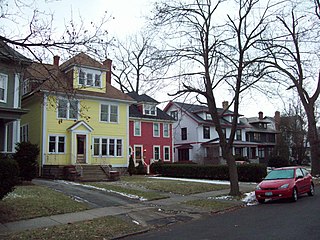
Parkside East Historic District is a national historic district located at Buffalo in Erie County, New York. The district is architecturally and historically significant for its association with the 1876 Parks and Parkways Plan for the city of Buffalo developed by Frederick Law Olmsted. It consists of 1,769 contributing structures developed from 1876 to 1936, as a middle class residential neighborhood. The district largely contains single-family dwellings, built in a variety of popular architectural styles, and located along the irregular and curvilinear street pattern developed by Olmsted. The district is located to the east of Buffalo's Delaware Park and includes the Walter V. Davidson House and the separately listed Darwin D. Martin House, both designed by Frank Lloyd Wright.
The Hobart Masonic Hall is a historic building located in the village of Hobart in Delaware County, New York, United States. It was originally constructed in 1889 as a meeting hall for St. Andrews Lodge No. 289 of Freemasons, although it is no longer used for that purpose.

Hotel Delaware is a historic hotel building located at East Branch in Delaware County, New York, United States. It was built in 1891 and enlarged after a fire in 1908. It is a large three-story wood-framed building, 40 feet wide and 70 feet deep. It features a two-story verandah on the front facade supported by Doric order columns on the first story.

Ulster and Delaware Railroad Depot and Mill Complex is a historic railroad depot and national historic district located at Roxbury in Delaware County, New York. The district contains five contributing buildings and one contributing structure. It was developed between about 1876 and 1946 and includes the Ulster and Delaware Railroad Depot, Robinson and Preston Steam Flour and Feed Mill, Slawson-Decker-Sheffield Co Creamery, Ulster and Delaware Railroad Ice House, and George M. Orr Blacksmith Shop.
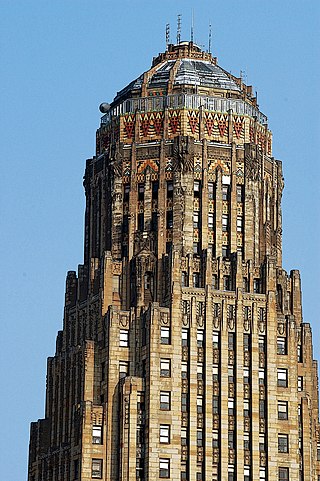
The Architecture of Buffalo, New York, particularly the buildings constructed between the American Civil War and the Great Depression, is said to have created a new, distinctly American form of architecture and to have influenced design throughout the world.

The Radnor Friends Meetinghouse is an historic, American Quaker meeting house that is located on Sproul and Conestoga Roads in Radnor Township, Delaware County, Pennsylvania.

The Guenther House is a restaurant, museum and store located at 205 E. Guenther Street in the King William neighborhood of the Bexar County city of San Antonio in the U.S. state of Texas. Currently operated by C. H. Guenther and Son. Inc., the home was originally built as a private residence in 1859 by Pioneer Flour Mills founder Carl Hilmar Guenther. It was listed on the National Register of Historic Places listings in Bexar County, Texas on October 11, 1990.

The Johnson-Morris House is a historic house at 41 Upper Pike Creek Road in northern New Castle County, Delaware. The core of the main house is a fieldstone farmhouse built c. 1803; it has four bays across and is two stories tall. A two-story ell, extending west from this main block, was added not long afterward. The house remained the central point of a farm until 1937, when it was purchased by Hugh M. Morris, a judge on the bench of the United States District Court for the District of Delaware. Between 1937 and 1939, the house underwent a major expansion, adding large ells, and restyling the original with Colonial Revival features. An earlier Colonial Revival transformation funded by Morris is now part of White Clay Creek State Park, part of which abuts this property.






















